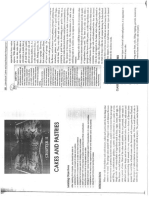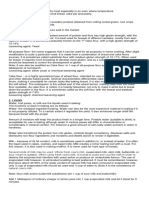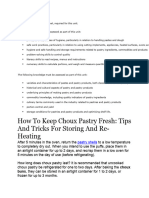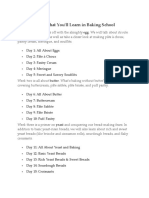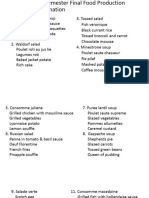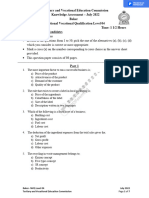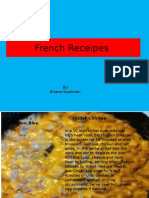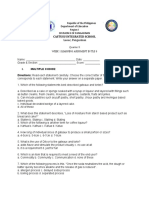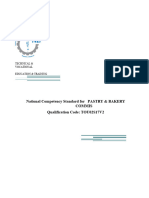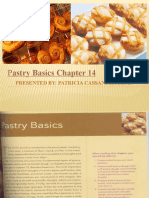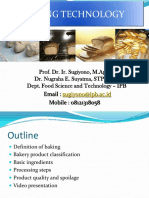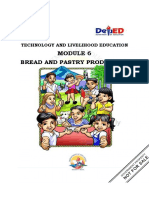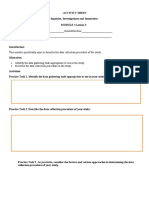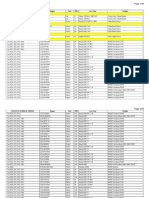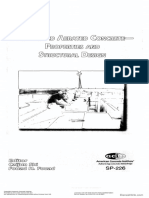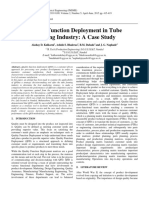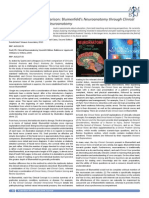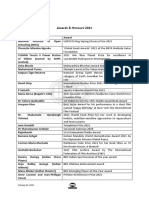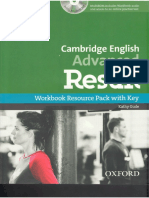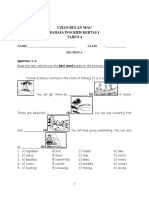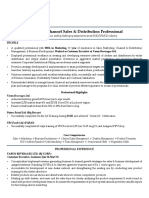0% found this document useful (0 votes)
503 views11 pagesPastry Basics: Types, Techniques & Recipes
1. There are two fundamental types of pastry - yeast-raised pastry and short dough pastry. Other types include puff pastry, éclair paste, and meringues.
2. The lesson covers preparing and producing pastry products, including using proper equipment and ingredients, mixing and baking techniques.
3. Key terms related to pastry preparation and baking are defined, such as crimping, docking, fluting, and streusel.
Uploaded by
Rhoze ApiloCopyright
© © All Rights Reserved
We take content rights seriously. If you suspect this is your content, claim it here.
Available Formats
Download as DOCX, PDF, TXT or read online on Scribd
0% found this document useful (0 votes)
503 views11 pagesPastry Basics: Types, Techniques & Recipes
1. There are two fundamental types of pastry - yeast-raised pastry and short dough pastry. Other types include puff pastry, éclair paste, and meringues.
2. The lesson covers preparing and producing pastry products, including using proper equipment and ingredients, mixing and baking techniques.
3. Key terms related to pastry preparation and baking are defined, such as crimping, docking, fluting, and streusel.
Uploaded by
Rhoze ApiloCopyright
© © All Rights Reserved
We take content rights seriously. If you suspect this is your content, claim it here.
Available Formats
Download as DOCX, PDF, TXT or read online on Scribd
/ 11


